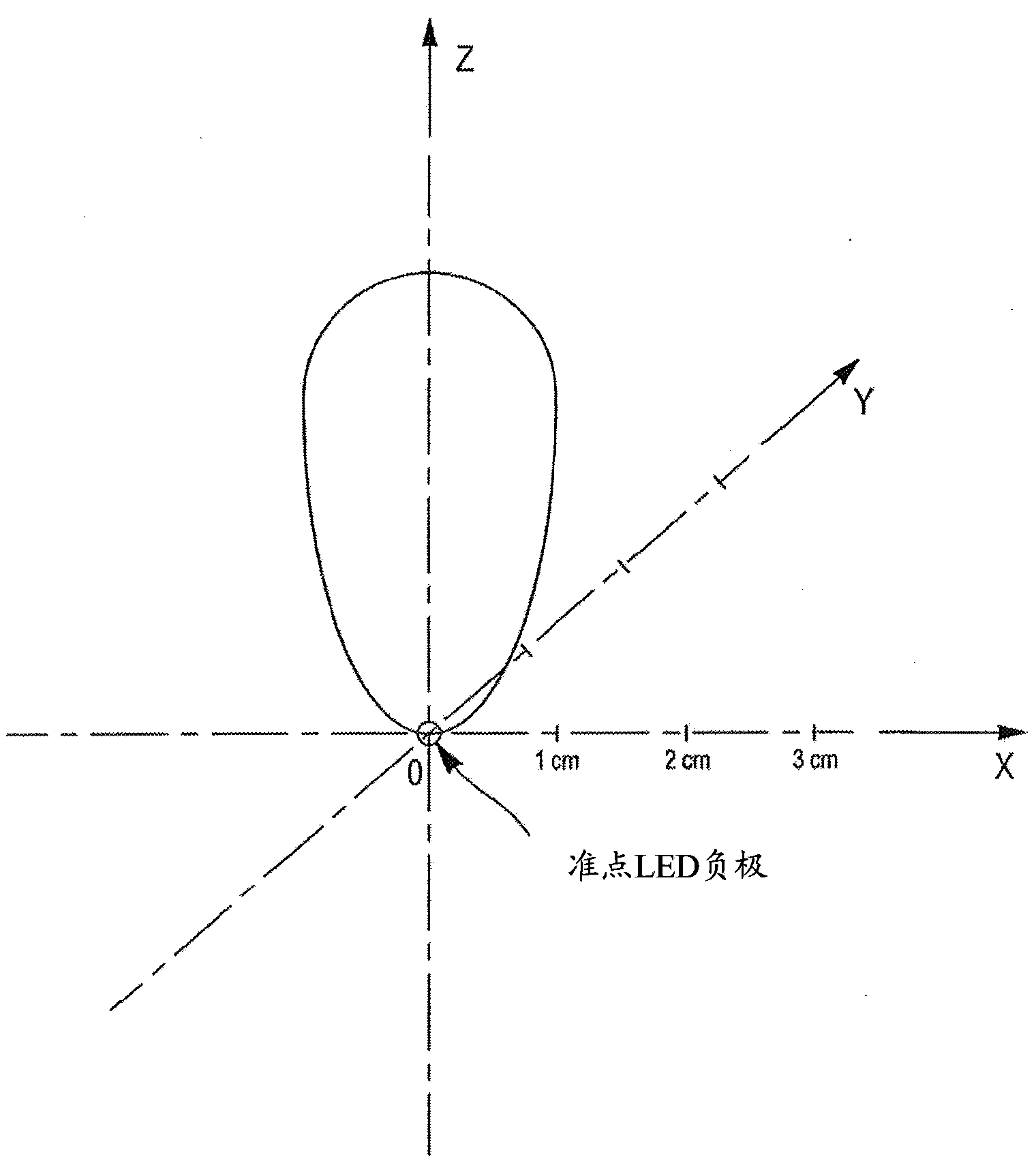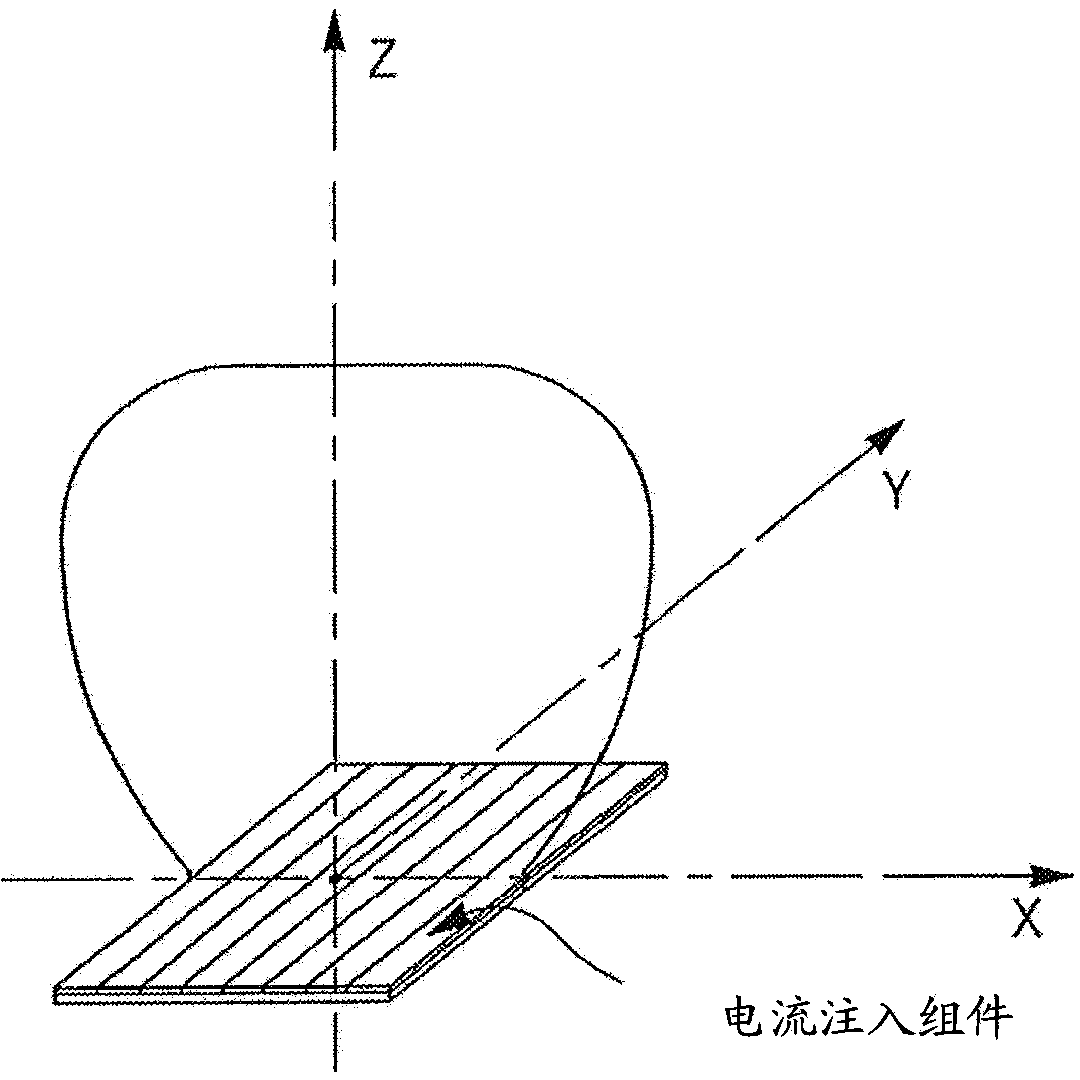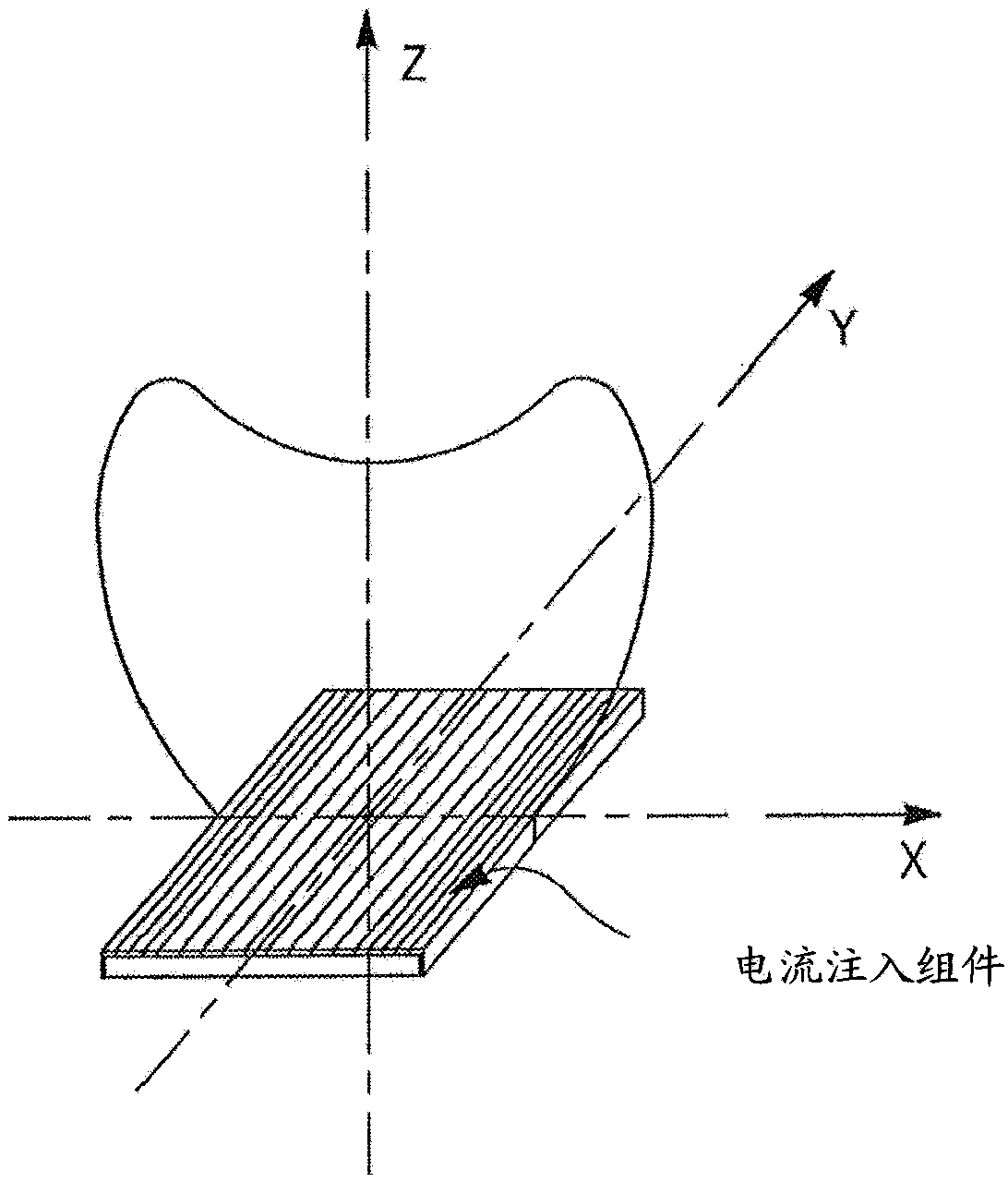Photobioreactor in a closed environment for cultivating photosynthetic micro-organisms
A photobioreactor, photosynthetic microorganism technology, applied in photobioreactor, specific-purpose bioreactor/fermenter, bioreactor/fermenter combination, etc., can solve the problem of low yield, difficult to combine multiple light sources, Problems such as hindering the optimization of biomass growth methods
- Summary
- Abstract
- Description
- Claims
- Application Information
AI Technical Summary
Problems solved by technology
Method used
Image
Examples
Embodiment Construction
[0093] A photobioreactor according to the present invention will be described with reference to the accompanying drawings.
[0094] Figures 1 to 5 is the energy emission diagram. Quasi-point LEDs emit energy in a "Lambertian" pattern (lobes). Most of the energy is emitted perpendicular to the surface of the semiconductor. This energy is reduced on the way out of the normal to the semiconductor. It is not parallel to the surface. By increasing the base lobe, the emitting surface can be extended beyond the natural lobe width to form an energy-constant emitting surface in a plane (xOy) parallel to the semiconductor surface. In the figure, the LED or photovoltaic cell is O-centered and its surface is oriented perpendicular to (Oz). Sections of these lobes are shown along the plane (xOz).
[0095] figure 1 Emission plot representing an LED located at the reference center. Assume that the negative pole is on point (less than 1 mm2 in size). Constancy exists through rotati...
PUM
 Login to View More
Login to View More Abstract
Description
Claims
Application Information
 Login to View More
Login to View More - R&D
- Intellectual Property
- Life Sciences
- Materials
- Tech Scout
- Unparalleled Data Quality
- Higher Quality Content
- 60% Fewer Hallucinations
Browse by: Latest US Patents, China's latest patents, Technical Efficacy Thesaurus, Application Domain, Technology Topic, Popular Technical Reports.
© 2025 PatSnap. All rights reserved.Legal|Privacy policy|Modern Slavery Act Transparency Statement|Sitemap|About US| Contact US: help@patsnap.com



